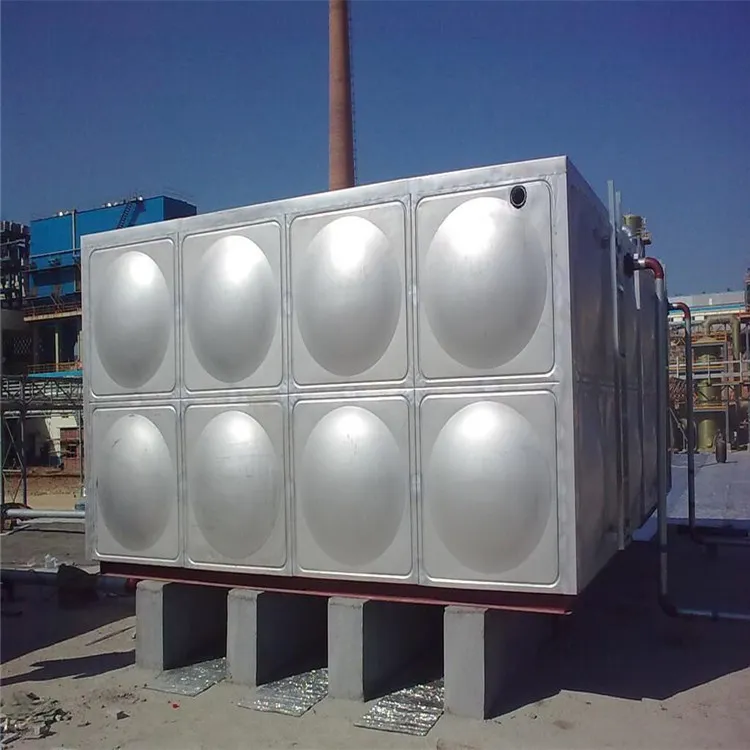loading...
- No. 9, Xingyuan South Street, Dongwaihuan Road, Zaoqiang County, Hengshui, Hebei, China
- admin@zjcomposites.com
- +86 15097380338
- Welcome to visit our website!
Choosing the Right Pressure Tank for Your Water Pump System Optimal Performance and Efficiency
Understanding Pressure Tanks for Water Pumps
Pressure tanks are vital components in water pumping systems, serving as a reservoir that helps maintain water pressure and ensures a consistent flow in residential, agricultural, and industrial applications. These tanks play an essential role in regulating water supply and storage, allowing pumps to operate more efficiently and effectively.
What is a Pressure Tank?
A pressure tank, often referred to as a bladder tank or expansion tank, is designed to store water and maintain a fixed pressure in the system. It contains a diaphragm or bladder that separates the air and water within the tank. When the pump fills the tank with water, it compresses the air in the upper part of the tank, creating pressure that can propel water into the plumbing system when needed. This mechanism alleviates the workload on the pump, prolonging its lifespan and improving overall efficiency.
How Do Pressure Tanks Work?
Pressure tanks operate based on a simple but effective principle pressurized air. As water enters the tank from the pump, the air in the upper section compresses, thus increasing the internal pressure of the tank. When a faucet is turned on or water is required, the compressed air forces the water out of the tank and into the plumbing system. This system helps maintain steady pressure, reducing the frequency with which the pump must cycle on and off. A well-functioning pressure tank can significantly enhance the performance of a water pump, making it an indispensable asset in many pumping systems.
Benefits of Using Pressure Tanks
1. Consistent Water Pressure One of the primary advantages of using a pressure tank is the delivery of consistent water pressure. Whether you are using water for irrigation, household activities, or industrial processes, a pressure tank ensures that the flow is steady and reliable.
pressure tank for water pump

2. Reduced Pump Cycling Frequent cycling of a pump can lead to wear and tear, reducing its lifespan. A pressure tank minimizes the number of times the pump has to turn on and off by providing a buffer of pressurized water, thereby enhancing the longevity of the pump.
3. Energy Efficiency By decreasing the pump's workload, pressure tanks contribute to energy savings. Because the pump doesn't need to run continuously, operational costs can be significantly reduced. This efficiency is particularly beneficial for large-scale applications where energy expenses can become substantial.
4. Storage Capacity Pressure tanks also act as storage units, allowing for the collection of water during times of low demand and providing a reserve when water is needed most. This capability is especially crucial in areas where water supply may be intermittent.
5. Simple Maintenance Most pressure tanks require minimal maintenance, making them user-friendly. Regular checks for air pressure and the condition of the bladder can help ensure continued optimal performance.
Selecting the Right Pressure Tank
When choosing a pressure tank for your water pumping system, it’s essential to consider factors such as capacity, material, and pressure rating. The size of the tank should match the water needs of your system to allow for effective pressure management. Additionally, selecting a tank made from durable materials, like steel or fiberglass, can enhance its lifespan.
In conclusion, pressure tanks are a crucial element of water pumping systems. They provide several benefits, including improved efficiency, consistent pressure, and reduced operational costs. Understanding how pressure tanks work and their advantages can help you make informed decisions for your water supply needs. Whether for home use or larger industrial applications, investing in a quality pressure tank is a step towards a more reliable water management system.
-
The Rise of FRP Profiles: Strong, Lightweight, and Built to LastNewsJul.14,2025
-
SMC Panel Tanks: A Modern Water Storage Solution for All EnvironmentsNewsJul.14,2025
-
GRP Grating: A Modern Solution for Safe and Durable Access SystemsNewsJul.14,2025
-
Galvanized Steel Water Tanks: Durable, Reliable, and Ready for UseNewsJul.14,2025
-
FRP Mini Mesh Grating: The Safer, Smarter Flooring SolutionNewsJul.14,2025
-
Exploring FRP Vessels: Durable Solutions for Modern Fluid HandlingNewsJul.14,2025
-
GRP Structures: The Future of Lightweight, High-Performance EngineeringNewsJun.20,2025
